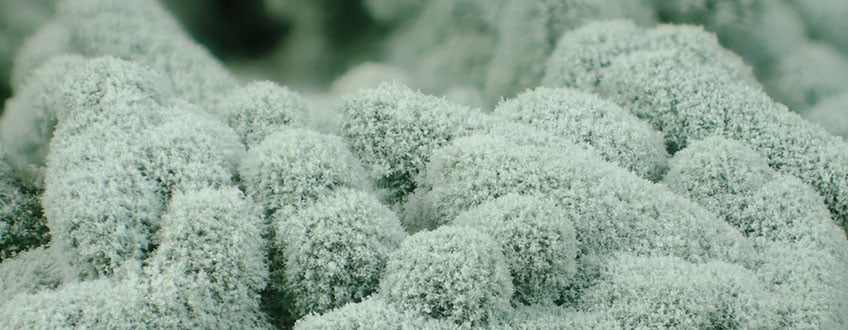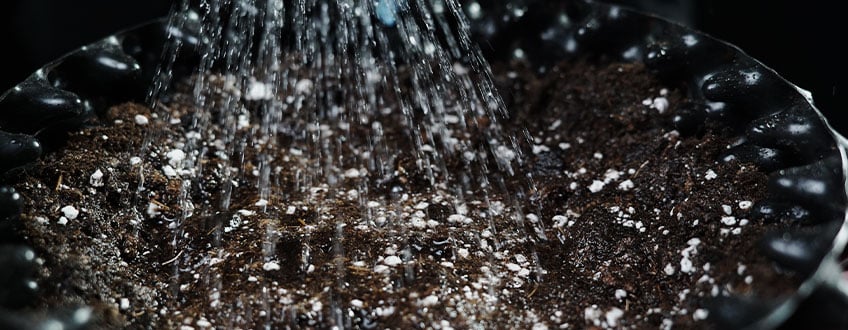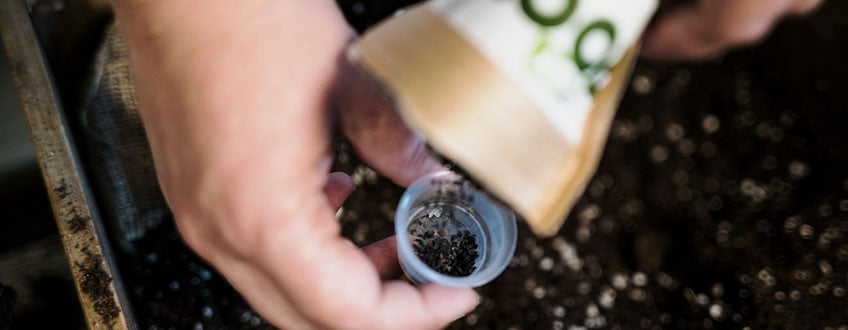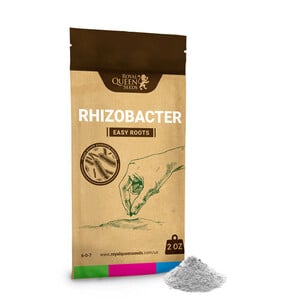.

What Is Trichoderma and Why Is It Important for Cannabis?
Trichoderma is a highly competitive genus of fungi that colonises plant roots and fights off many soil-borne pathogenic fungi. Simultaneously, it also produces antibiotics and metabolites that promote healthy growth and nutrient uptake. Find out all you need to know about using Trichoderma in your cannabis grow.
Contents:
As a cannabis grower, you've likely heard or seen the term Trichoderma, either from other growers, through your own research into cannabis growing, or on the tags and descriptions of soil amendments, fertilisers, and store-bought substrates. But what exactly is Trichoderma, and why do so many cannabis growers swear by its benefits? Keep reading to find out everything you need to know.
What Is Trichoderma?
Trichoderma is a genus of soil fungi that can be found in almost all types of soils across a wide variety of ecosystems. Trichoderma feed off an assortment of other fungi, and flourish in soils with a high density of plant roots, which they can (and love to) colonise. Properly identifying and classifying Trichoderma species is difficult, as they demonstrate few (and hard to identify) morphological differences. In fact, Trichoderma was long considered monotypic (containing only a single species); today, however, at least 33 unique Trichoderma species have been identified.

What Is Trichoderma Used For?
Trichoderma is commonly used in agriculture and domestic gardening, as it is known to attack and feed on other fungi and bacteria, proving itself effective in the control of a variety of different pathogens. Trichoderma products are used in the following ways:
- To treat seeds prior to planting
- As a soil amendment before planting
- As a growth stimulant and biocontrol agent administered during growth
What Are the Benefits of Trichoderma for Cannabis?
Though we’ve alluded to some already, below are some of the key benefits associated with using Trichoderma in a cannabis grow.
1. Better Root Development
Trichoderma love to colonise plant roots, and thrive in the rhizosphere, where they feed off bacteria and other fungi. Trichoderma can be applied directly to your seeds, to potting soil, or around the root zone of growing plants; once they come into contact with the roots, they'll colonise the root surface, or cortex. Some strains of Trichoderma (such as T. harzianum, or T-22) are considered "highly rhizosphere competent" and can colonise plant roots as they grow. Plants grown with Trichoderma have repeatedly been shown to develop larger, healthier root systems[1] than plants grown without the fungi.
2. Protection From Pathogens
Trichoderma protect plants from pathogens in a number of ways. First, they can parasitise other fungi by attaching to them and producing enzymes that slowly break down their cells (while simultaneously protecting themselves from the enzymes they produce). Second, Trichoderma can produce antibiotics and metabolites that attack and destroy plant pathogens.
Trichoderma are also very skilled at competing for nutrients in the rhizosphere, and can effectively starve other, less competitive fungi. Trichoderma have also been shown to destroy the eggs and juveniles of plant-eating nematodes. Finally, the presence of Trichoderma at the root zone is also believed to help plants produce natural defense chemicals[2] that further stave off both soil-borne and above-ground pathogens.

3. Improved Plant Health and Fruit Production
Besides stimulating root growth and helping to control plant pathogens, Trichoderma can also stimulate the overall growth of plants and their ability to produce high-quality fruit (or buds). Studies have shown, for example, that Trichoderma produce acidic metabolites that can break down organic matter in soil and thereby promote nutrient uptake by the root system.
This secretion of organic acids may also help to control soil pH, keeping plants (particularly those that like slightly acidic soil, such as cannabis) at a pH level where they can maximise nutrient uptake. Trichoderma has also been shown to secrete "hormone-like" compounds that promote[3] both a plant's above and below-ground growth.
4. Natural and Environmentally Friendly
Unlike chemical pesticides/herbicides, Trichoderma is 100% natural. Trichoderma species naturally exist in soil ecosystems, and introducing them into your cannabis garden will likely have no negative effect on the plant and animal life around you. While Trichoderma have been shown to trigger allergic reactions and other health problems in some people, the fungi are generally considered safe when used appropriately (more info below). Trichoderma-treated soil isn't toxic to animals, and won't damage other plants in your garden, nor the important microbial life forms needed to maintain a healthy living soil.
5. Soil Detoxification
One final benefit of using Trichoderma in an agricultural setting, or even in domestic gardening, is its ability to purify old or contaminated soil. Studies have shown, for example, that Trichoderma can help to degrade heavy metals such as cadmium, mercury, copper, zinc, and arsenic, which are often present in chemical pesticides, herbicides, and fertilisers. Moreover, studies have even shown that Trichoderma can even effectively break down organic pollutants such as diesel[4]. At the same time, many species of Trichoderma are highly resistant to chemical toxins, such as pesticides, for example.
How to Use Trichoderma to Grow Healthier Cannabis Plants
Given the above, all sorts of cannabis cultivators turn to Trichoderma to support their grow operation. And luckily, doing so is super simple. Ideally, we recommend using Trichoderma in one of the following three ways.
Note: Trichoderma may irritate the skin, eyes, and/or respiratory tract. Hence, always use gloves, protective eyewear, and a face mask when handling Trichoderma products.

💚 To Coat Seeds Prior to Planting
Studies have found that seeds coated with Trichoderma prior to planting demonstrate increased resistance to pathogens such as Fusarium and Pythium. To coat your seeds in Trichoderma:
1. Put a small amount of Trichoderma powder in a clean and dry Petri dish or plate.
2. Use tweezers to gently place your seeds into the powder.
3. Plant your seeds directly into soil or in their starter blocks to germinate.
Once your seeds germinate, the Trichoderma you applied to them will automatically start colonising the roots. This will stimulate root growth from day 1, as well as keep your seedlings protected against pathogens that can cause wilting, damping off, and other common seedling problems.
🌟 To Amend Soil Prior to Growing
Trichoderma can also be very effective when used as a soil amendment prior to planting. There are a couple of ways to go about this:
1. You can add Trichoderma to your entire soil mix at a ratio of roughly 0 oz of Trichoderma powder or granules per litre of soil, and combine thoroughly.
2. Or, you can just add 0.2 oz of Trichoderma to the top layer of your soil, where it'll come into direct contact with your plant's roots. To do this, simply sprinkle Trichoderma powder or granules into the hole where you'll be planting your seedlings.
💹 To Support Plants As They Grow
One final way to use Trichoderma in your cannabis grow is to add it to water and apply it directly to your plants' soil as you would a liquid fertiliser:
1. Combine 0.2 oz of Trichoderma with 1l of unchlorinated water, and water as normal.
2. Repeat once every 2–3 weeks to promote healthy growth and protect your plants against pests.
Microbial and Fungal Support for Your Cannabis Plants with RQS Rhizobacter
At RQS, we're true fans of organic cannabis cultivation because it not only produces a natural product with unbeatable aromas and flavors, but also helps us minimise the impact of growing weed on the environment. If you're looking into ways to minimise your footprint, our Rhizobacter formula is 100% natural and made from algae that promote the growth of beneficial microbes and fungi, like Trichoderma, at the root zone of your plants, all without negatively impacting the environment. Our formula will help your plants stay protected against pathogens, support strong root growth, and improve nutrient uptake for optimal growth.
Here's how to use Royal Queen Seeds Rhizobacter:
• In a soil mix: Add 0 oz of Rhizobacter to every litre of soil and mix thoroughly.
• When transplanting: Add 0 oz of Rhizobacter to the hole where you plan to plant your seedling or transplant your growing plant, add in your plant/seedling, top up with soil, and water well.
• As a soil drench: Dilute 0 oz of Rhizobacter per 1 litre of water, and drench your plant’s topsoil every 21 days.
A Note on Mycorrhizae and Nematodes
The term mycorrhiza often pops up in discussions around organic cannabis cultivation. However, many growers misunderstand what mycorrhiza actually means. Mycorrhiza literally means "fungal" (myco) "root" (rhiza), and refers to a symbiotic relationship between plant roots and fungi. Mycorrhizal plant supplements (like our Easy Roots Mycorrhiza Mix, for example) typically contain fungal spores that promote the growth of mycorrhizal fungi, which, similar to Trichoderma, can help plants uptake water and nutrients, as well as stave off pathogens. While different manufacturers use different fungal species in the formulation of their products, our Easy Roots Mycorrhiza Mix contains the following fungal species:
|
• Rhizophagus irregularis • Entrophospora colombiana • Glomus spurcum • Glomus mosseae |
• Glomus geosporum • Glomus clarum • Glomus etunicatum |
Like Rhizobacter, our Easy Roots Mycorrhiza Mix can be used as a soil amendment or drench. When adding it to soil, mix 0.1 oz of Mycorrhiza Mix into the topsoil of each plant and place 0 oz directly into the planting hole. When used as a drench, mix 0.2 oz of Mycorrhiza Mix into 1l of non-chlorinated water and apply to the soil every 2–3 weeks to promote the growth of beneficial root fungi.
Like Trichoderma and mycorrhizal fungi, nematodes are another organism that can improve the health of your soil, and therefore your plants. Nematodes are unsegmented roundworms that can be found in virtually every ecosystem on the planet. While there are some plant-parasitic nematodes that you'll want to keep as far away from your cannabis as possible, most nematodes actually benefit soil and plant life. More specifically, nematodes feed off bacteria and can help control bacterial populations in a soil ecosystem, as well as protect your plants against predatory insects. Garden centers often carry nematode species from the Steinernematidae and Heterorhabditidae families, which are known to be beneficial to plants.
Trichoderma: A Natural Way to Boost Root Health and Plant Growth
For cannabis growers, Trichoderma offers a natural way to stimulate root growth and nutrient uptake while simultaneously protecting plants from a variety of pathogens, all without producing toxic runoff or other negative outcomes for the environment. So before reaching for synthetic alternatives, harness Mother Nature to do the job for you.
- https://snrd-asia.org/download/aseansustainable_agrifood_systems_aseansas/Trichoderma-leaflet-final_reduced.pdf
- https://snrd-asia.org/download/aseansustainable_agrifood_systems_aseansas/Trichoderma-leaflet-final_reduced.pdf
- https://www.sciencedirect.com/science/article/pii/S0570178320300415
- https://www.researchgate.net/publication/340328700Application_of_Trichoderma_spp_Restoration_in_SoilHealth







































